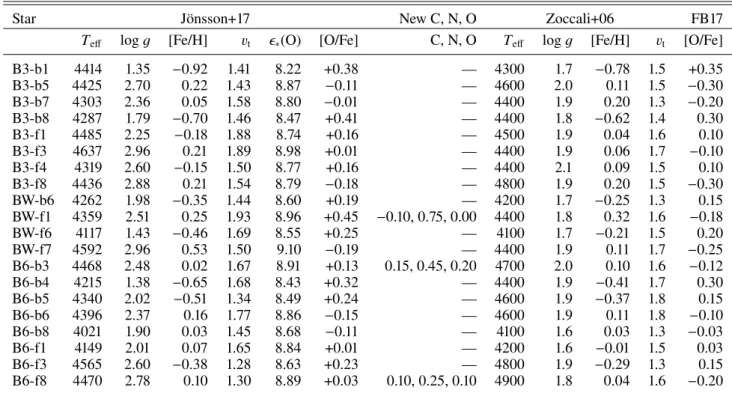Oxygen and zinc abundances in 417 Galactic bulge red giants
Texto completo
Figure




Documento similar
[r]
So reaction is fastest between most abundant, least charged pairs of nuclei, and increase in T is needed to make slower reactions significant.. H-burning is by far the
The spatially-resolved information provided by these observations are allowing us to test and extend the previous body of results from small-sample studies, while at the same time
prepared a triad consisting of a Fc unit linked to a zinc triarylporphyrin through a benzo-amido-benzo spacer, and a 4-pyridylnaftalnediimide axially coordinated to the zinc
Ia, and also partially due to mas yields. Therefore, both IMF and massive stellar yields are playing a role here. It is evident that a ‘by eye’ inspection of these panels would
In the first stage electrons from Ga moves through vacancies of the oxide until they reach the oxide-air interface and ionize oxygen atoms (red circles). These ions diffuse
Since the oxide growth rate is approximately constant along the transformation process, the oxidation time scales linearly with the nitride thickness.. This property enables
We also plotted the total oxygen abundances calculated from the electron temperatures measured using the direct method, only for the long-slit data of knot B, and those estimated


![Fig. 4. [Zn/Fe] vs. [Fe/H] for the present sample (333 stars), compared with literature](https://thumb-us.123doks.com/thumbv2/123dok_es/3751291.643950/9.892.104.790.112.585/fig-zn-fe-present-sample-stars-compared-literature.webp)
![Fig. 6. Panel a: [Zn/Fe] vs. [Fe/H]: same as in Fig. 4, including the damped Lyman-alpha systems data by Rafelski et al](https://thumb-us.123doks.com/thumbv2/123dok_es/3751291.643950/11.892.101.790.123.776/fig-panel-including-damped-lyman-alpha-systems-rafelski.webp)

